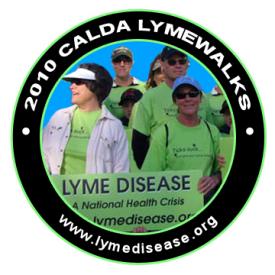TOUCHED BY LYME: Where money for Lyme research goes

When we started publicizing that the 2010 CALDA Lymewalks are raising money for research, many people asked us what kind of research we are funding. It’s a fair question. Here’s a run-down on current research projects funded by CALDA.
.
.
.
.
.
.
.
.
.
.
CALDA has a committee made up of researchers, doctors and patients, who evaluate applications for research grants with an eye for projects that are patient-oriented. Our goal is to fund research that will do the most to help patients. (Typically, CALDA doesn’t fund the entire project. Researchers usually get support from a variety of sources.)
Here are current projects being funded in part by CALDA.
StanfordUniversity. Clinical manifestations of Lyme disease.
How is chronic Lyme defined? The diagnosis of Lyme disease is complicated because of the diversity of its clinical manifestations, with symptoms reflecting involvement of the brain, nerves, joints, muscles or heart. This research project focuses on the diverse manifestations of Lyme disease that are underrepresented in treatment research. The primary goal of this research is to establish a preliminary case control definition of chronic Lyme disease that recognizes the diversity of symptom patterns and the limitations of standard diagnostic tests. Knowledge gleaned from this study should help doctors do a better job of diagnosing and treating Lyme, and pave the way for more extensive research of chronic Lyme.
University of California, Davis, vet school. Mechanisms of Bartonella transmission between ticks and dogs.
Bartonella transmission is not well understood. This study seeks to gain insight into the role of ticks in the transmission of Bartonella (a co-infection plaguing many Lyme patients.)
Stony Brook University, New York. Profiling the Humoral Response to Bb Infection with Protein Microarrays. Looking for more effective antibiotic treatments for Lyme disease.
University of New Haven, CT
Antibiotic susceptibility of the spirochete and other morphologies of Borrelia burgdorferi. Looking for treatments to eliminate all forms of Bb (spirochete, L-form, and cyst).
This project is being carried out by Dr. Eva Sapi, who is doing important work about a variety of aspects of Lyme disease. You can see a 10-minute interview with her about her work on YouTube.
JohnsHopkinsUniversity, Baltimore, MD
Molecular Basis of Borrelia burgdorferi L-form Formation.
Perfecting a technique for culturing L-forms of Bb in the laboratory, which could lead to more effective treatments.
These five projects are important steps, but there is still much work to be done. Won’t you help us raise money for more research by participating in the 2010 CALDA Lymewalks? If you are unable to attend in person, you can still create your own fundraising page or donate via somebody’s else’s page.
Contact blogger Dorothy Kupcha Leland at dleland@lymedisease.org.




















This is all well and good but will anyone accept the results? Seems like we need the FDA to approve a test for our condition. Like PCR. Once we can prove we are infected all our enemies will be defeated. Then maybe a class action lawsuit can started.